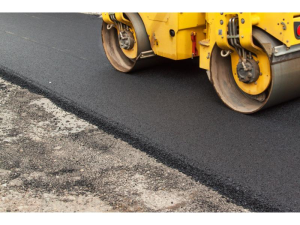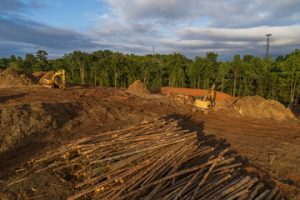A jigsaw ($40-100) is a versatile tool for handymen, offering the ability to make curved and detailed cuts. Look for blades designed for wood, plastic, or metal to maximize efficiency and ensure clean, accurate work.
Having the right tools shows customers you’re prepared and capable, increasing their confidence in your abilities. Consider highlighting your service list and customer reviews on your website to build credibility. Contact Handyman Naperville now!

Handyman are skilled at a variety of tasks, including plumbing and electrical work. However, certain projects are outside their scope of practice and could result in injuries if they’re not completed correctly. Hiring a professional ensures that your repairs will be done properly and safely.
When hiring a handyman, it’s important to discuss their scope of work and any additional services they offer. For example, some handymen may be able to help with landscaping and yard work while others can’t. This will give you a clear idea of the costs and expectations for your project.
Handymen can tackle a wide range of home repairs, from painting touchups to installing or repairing doors and windows. They can also handle drywall repair, minor carpentry work, and basic electrical installations and fixes. They can also clean or repair gutters, paint the house, take care of the lawn and landscape, and repair a deck or patio.
Some states require that handymen have a license to perform some specialized tasks like plumbing or electrical work. Check with your state’s regulations to see if this applies to you. It’s also a good idea to hire a licensed handyman who has insurance coverage through Thimble. Our on-demand insurance gives handymen the peace of mind that they’re protected against job site accidents. Plus, it’s simple to get a quote, purchase insurance and access your certificate of insurance in minutes, all from the comfort of your home or office. This makes hiring a handyman an easy and affordable option for all your home maintenance needs.
Electrical
Handymen often perform a wide range of electrical services. For instance, they can install new light fixtures and ceiling fans to enhance the functionality of rooms. They can also replace existing outlets and switches. They can also run cable lines to accommodate televisions and other electronics.
Another popular service that handymen offer is installing smoke detectors and carbon monoxide detectors. They can also troubleshoot problems with these devices, such as faulty batteries or a broken alarm. In addition, they can help with basic home security tasks like setting up doorbells and alarm systems.
Licensed electricians use their knowledge of wiring, circuitry, panels, and GFCI receptacles on a daily basis to ensure their work meets all state and local codes. They stay current with the latest electrical service methods and products, and they have years of experience delivering high-quality solutions.
The services that handymen provide are a great alternative to those offered by professional licensed electricians. They can save you time and money, as well as the stress and hassle of dealing with an inexperienced electrician. However, it is important to understand that hiring a handyman for any job that involves electricity can be dangerous.
Outdated or overtaxed wiring and circuitry can cause appliances to break down, leading to costly replacements. If a handyman performs these services without the proper credentials, they may be subject to fines or even face criminal charges. Moreover, they might damage your home with extra holes, dented walls, and scratches. Hence, it is always recommended to work with professional licensed electricians to avoid these risks. However, a skilled handyman can perform many of the same services as an electrician, so you can hire one based on your needs and budget.
Painting
Handymen provide painting services, both interior and exterior, to refresh rooms and revivify homes. They are skilled in addressing small imperfections on wall surfaces, creating a smooth and even canvas that’s ideal for applying decorative paints. They can also help you choose the right color for your space and complete any necessary prep work, such as patching and sanding.
On average, the cost of painting a standard-sized room ranges from $200 to $500. However, these figures can vary significantly depending on several factors. It’s best to ask for a precise assessment from multiple handymen and discuss your project’s specific requirements. This will ensure transparency in the pricing process and empower you to make an informed decision.
Painting is a labor-intensive task, and the costs of materials play a big role in the overall price. The number of coats required affects labor and material costs; applying two coats typically requires more time and cost than a single coat. Additionally, the type of paint used and its quality influence price. High-durability coatings generally carry a higher price tag than ordinary paints.
Aside from painting walls and ceilings, handymen can also install crown molding and other trimming to enhance a home’s interior. Moreover, they can hang items such as paintings or shelving on walls. They can also perform minor gutter repairs, preventing blockages that lead to water damage.
In addition to basic maintenance and repair, handymen often handle more complex home improvement projects such as installing new doors or windows, replacing a toilet, or adding an extension. They can also carry out other tasks like repairing cracks in foundations and walkways. They can also install or replace lighting fixtures, and make drywall repairs.
Roofing
Roofing is a major investment in your home and protects it from the elements. However, a roof can suffer from problems that require professional roofing services. Whether you are facing a leaking roof, missing shingles or damaged flashings, a handyman may not be qualified to handle the work. Unlike a licensed roofing contractor, a handyman usually lacks insurance protection, tools, training, and experience in handling specialized roofing projects.
A roofing repair done by an unskilled handyman can actually cause more damage than the original problem. For example, a shingle that was removed to fix a leaky roof might be put back in the wrong place, resulting in more moisture and potential for mold. Also, a handyman may walk on your roof and cause further damage to other areas of the structure. In addition, a handyman’s lack of roofing knowledge could void your roof warranty.
Roofing contractors specialize in roofing projects, including installations, repairs and replacements. They often adhere to specific regulations and may have certifications from roofing material manufacturers that showcase their commitment to quality. On the other hand, a handyman is a versatile professional with a broad skill set and does not have as focused a focus on roofing projects. As a result, they are not subject to as many rigorous requirements and may not have specialized certifications.
Carpentry
Handymen are skilled at addressing basic plumbing needs, such as unclogging drains and fixing dripping faucets. They can also repair or replace fixtures and appliances, preventing water waste and ensuring that your home’s plumbing functions properly.
Minor carpentry projects are well within the scope of a handyman’s skillset, including building bookshelves, interior storage solutions, and repairing or replacing door frames and trim. Additionally, they can build and install fences and gates or repair existing ones, ensuring your property’s security and aesthetics.
Handyman services often include basic cleaning and maintenance tasks, such as washing windows on two- or three-story homes or pressure washing decks and patios. They’re also able to install new light fixtures and ceiling fans, bringing a fresh look to your home and adding functionality.
They can also make drywall repairs, such as patching holes and dents, and recoloring walls and ceilings to freshen up interiors. Through expert patching techniques, they create a seamless surface that’s primed for painting or wall coverings.
Finally, handymen can assist with furniture assembly. Whether it’s that one annoyingly squeaky chair or an entire living room set that comes in countless flat-packed boxes with cryptic instructions, they have the tools, knowledge, and patience to tackle the most complicated of furniture assembly jobs.







